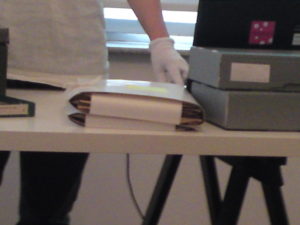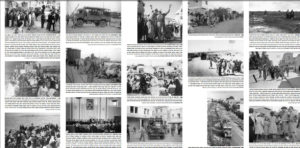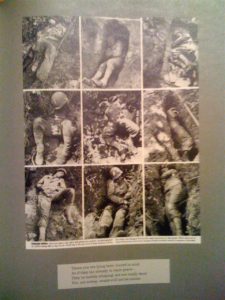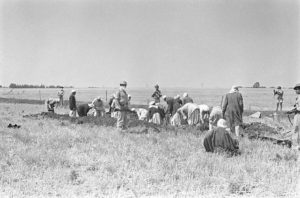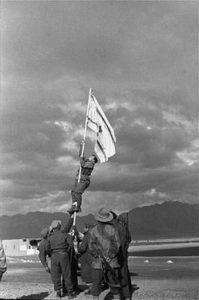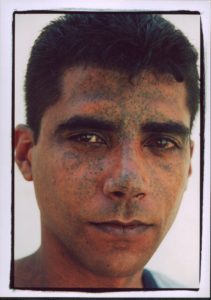Archive : Ariella Azoulay
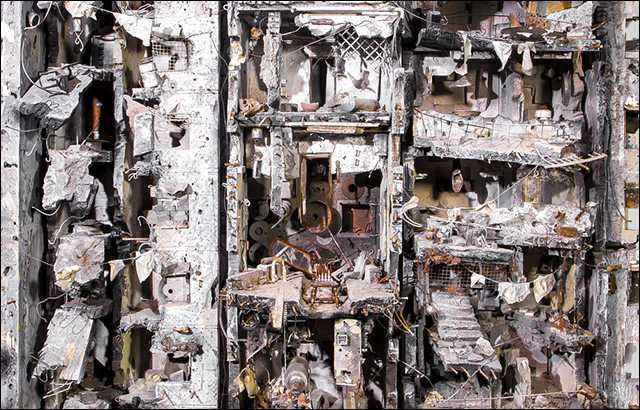 Archive : Ariella Azoulay This text is dedicated to Anat Kam, who I consider to be the founder of the Israeli Archive of Executions, for the creation of which she has been penalized with two years of house arrest and a four-and-a-half year prison sentence. For the past two decades, the Hegelian concept Aufhebung keeps appearing in the elaborate literature written on the subject of archives. It describes archival work. Here is a late, characteristic example of this approach: “To archive is to put away, to shelter, to keep . . . The modality of Aufhebung, conventionally translated into English as ‘sublation,’ ushers us into the spaces of the archive. The polysemic meaning of Aufhebung implies both preservation and cancellation.”1 There is something rather suggestive and seductive in this pair of opposites encompassing a whole world, as it were, and they themselves embrace the archive world as though nothing has escaped them. However, anyone who has visited an archive and contemplated the series of actions, situations, and emotions experienced there, will say that the distance between one’s experience and these two actions proves that these are two different worlds. For the sake of simplicity let me call these worlds the abstract archive and the material archive. The former is described in texts of the kind I have quoted, and shows no trace of the people who created it, nor of those who use it. The archive is envisaged as acting by itself, of its own accord, as though it were the home of that dialectic of preservation and cancellation. Photographs such as those of Patrick Tourneboeuf show spaces devoid of humans that converge into a vanishing point in eternity. Exceeding the here and now, sometimes in consequence of physical conditions that do not enable the photographer to position him/herself otherwise, is invented even when the archive is fully lit and relatively flat. An archive of the latter type is more concrete. Its depiction is also interwoven in the presence of those manning various positions of power that authorize them to both preserve and expose materials as well as the presence of others coming to leaf through them, who are distanced or allowed respectively. In his book Archive Fever, Derrida presents the figure of the archon, guardian of the documents, the sentry as one of the three pylons upholding the archive. The other two are the place and the law. The discussion of sentries enables Derrida to slightly reduce the abstractedness of the archive idea, and speak of figures of power that legislate, repeat their law and enforce it. However, his look at the sentries from the outside, as those who set the archive borders, lets them fool him at times and force him to look at the threshold from their point of view—namely inward, at the way in which they uphold the law of the archive and leave him, Citizen Derrida, outside, beyond its conceptualization. Derrida fools them in his turn, writing, “It is a question of the future, the question of the future itself, the question of a response, of a promise and of a responsibility for tomorrow.”2 For a long time, archive archons prevented the outbreak of archive fever as we witness it today, and through which I wish to think what an archive is. They succeeded in this since they were placed in charge not only of preserving documents and not merely of what Foucault called the “space of appearance” through which they are seen. They were placed in charge of always distancing those wishing to enter the archive too early, before the materials stored within would become history, dead matter, the past. This distancing constructed the archive as a deposit of past time, completed, such that it posed no real threat to the power and the law, and at most could serve for writing history. In real time, that which has been stored in it could have often provoked a scandal, upset people whose destiny had been decreed behind their backs. In the archive constructed as ex-territorial and a receptacle of the past, that which had been cruel and biting is supposed to appear, or we expect it to appear as dulled, a piece of history, its accusing finger cut off, blunted. The time that was allowed archives to rob citizens—20, 30 or 40 years of safe-keeping of documents until the citizens may look at files—turned from sovereign, unnecessary violence into an essential feature of the archive. Those—many, too many—who sought to conceptualize the archive and did not contest its being the home of the past, fell into this trap set for them by the sentries. The extensive power vested in the sentries must not make us underestimate the importance of the archive fever typical of our time—and the possibility it allows us to re-think the archive from its foundation, from the fever, from the acts of those who it infects. Instead of asking “What is an archive?,” then, in a way that leaves the archive outside and retains it as a fortress outside our world, making us its pilgrims, I shall first ask “Why an archive?,” or “What do we look for in an archive?,” and only then answer what an archive is. Following closely in the footsteps of those entering the archive, we shall discover that the way to file any document in the archive, let alone search for it, is lined with a rich constellation of accessories and mechanisms that in themselves already serve as sentries—cards, forms to be filled, search engines, lists, code words, folders, male and female clerks, laws, regulations, gloves, aprons, robes, brushes, chemicals, customs, and rituals. These remind us that historic material is at hand, data and notes that must be treated with caution, that every piece of paper must be returned to the exact place where we have found it, even if we have our reservations about the place allotted the document. However, this constellation, aimed at distancing us, is meant no less to bring us closer, to see to it that we behave in the archive’s garden of forking paths without upsetting other items, without being able to spread at one and the same time an all-too encompassing picture made up of materials originating in more than several folders. This is the suspending constellation that ensures we do not devour the items the way Chronos devoured his children, to later regurgitate them willingly or at random as dwellers of the present, in the present. Think for a moment of Anat Kam.3 Imagine her first as one of the sentries, a part of those ranks guarding those sweet documents away from the public eye. And now, imagine her as a citizen passing by valuable documents, in which people are doomed to their fate without being brought to trial. Imagine the awakening of her consciousness, possible awareness aroused in view of such documents—if I don’t rescue them, they will be trashed or, at best, stored in the archive for another 40 or 80 years, and either way, escape the public eye. Imagine Kam’s horror while reading the contents of those documents, and her determination, the well known “fanatical dedication” of rescuers of objects and documents, realizing that she is up against the opportunity to found the Israeli archive of executions. Imagine her swallowing one document after another, all 2000 of them, ingesting them, making sure not a single crumb escapes her lips. She did not fail her sentry habits, in charge of the gates of that archive—she watched over the documents well, made sure to produce copies, and for own sake established several rules to protect them from others. But as two years passed, she burst with anger, shame, rage, fear, and responsibility, understanding that keeping the documents for herself, in her own belly as it were, deprives the archive she had founded of the public dimension that justifies the existence of an archive, that allows it to maintain documents regarding others, turning it from a private collection of documents into an archive per se. Therefore, instead of whimsically depositing the documents in the hands of anyone she happened to meet, with the responsibility of an archivist, Kam gave it to a journalist of a respectable newspaper. In hindsight this proved to be the wrong choice—since right there, instead of citizens, lurk wolves. My first answer, then, to the question “What do we look for in an archive?” will be: that which we have deposited there. Not necessarily you or me personally, but you and me as those sharing our world with others. “We” beyond the borders of a certain time and place, “we” that do not converge into a collective of national or ethnic identity, “we” who instead of being positioned as the reason and sense for the archive, used to be replaced with the term “history” and say that this was its reason, as if at the end of time history itself would knock at the gates of the archive and wish to settle accounts. Archive fever crosses borders. It is manifested in the claim for access to that which is kept in the archive, and no less in partaking in the practice of the archive through founding archives of new sorts, such that do not enable the dominant type of archive, founded by the State, to go on determining what the archive is. Archive fever challenges traditional protocol by which official archives have functioned and continue to do so. It proposes new models of sharing the documents stored therein in ways that requires one to think the public’s right to the archive not as external to the archive but rather as an essential part of it, of its character, of its raison d’être. “Archive Fever” is not simply a problematic translation of a book title, Derrida’s Mal d’archive. It is a real phenomenon that Derrida ignores. It is the result of numerous individual initiatives for creating new archives and claiming the right to re-arrange and use existing ones. Radical changes brought on by the new social (civil) media have turned these initiatives into a contagious and irreversible trend. The paradigmatic examples of this trend and its temporary culmination are Wikileaks, based as it is on a new understanding of the role of the sentry, and Flicker, due to the fact that it provides a depository for a limitless production of images, produced by a variety of cameras and mobile phones and shared by anonymous users. The production and archiving of an excessive quantity of digital images that greatly exceed the capacity of its producers to ever consume even a portion of them, should be understood as a new type of archival contract among image producers, mediated by their cameras, cellphones, and the entire technology of the internet. This contract implies the citizens’ right to share not only what is stored in the archive but also have a right to be involved in producing and depositing material in the archive. They all take part in producing and sharing images, knowing that the images one produces always exceed one’s capacity to understand their content and meaning, that the interpretation of images is a task that calls for multiple collaborations, and that each of one’s images may one day emerge—usually by or through the gaze of others—as “the missing image.” Archive fever enables one to reconstruct retroactively this right as having been written in archive logic from the very beginning, in its space organization, in its architecture and the mechanisms that maintain it, no less than the presence of its sentries that was written in them. The administration and monitoring by sentries of our motions in the archive have placed obstacles in our way, but no less than that they expressed clear recognition of the fact that we, citizens, have a right to that which is stored therein. This right they have wished to administer, and defended themselves against our claim to its complete fulfillment. Many aids help us in the many windings of the archive—sponges over which crumbling papers must be placed, desks, lamps, photographic instruments, card catalogues and indices, or white gloves. Had our public right to accessing anything in the archive not been recognized as an inalienable one, no one would have gone to the trouble to supply us with such aids, even if at times their main purpose is to keep us from complaining that access has been denied us, just as our body bursts with withheld rage knowing that within the walls of the archive—sometimes between the lines—are the very items we are seeking, or similar ones. Withheld rage, suffocation, nausea, anger, frustration, fright, horror and helplessness, no less than hope or passion reported by those infected with archive fever, bear witness to the fact that archive documents are not merely a collection of dead letters. Archive documents are not items of a completed past, but rather active elements in a present and must be properly and carefully handled, precisely because they are the means by which destruction might continue to be wrought, just as they might enable some restitution of that which continues to exist as present, in the present. The habitus that I have described here, motivated by right and its claim, is not the classical habitus of a historian tracing the past, but that of researchers whose interest in the archive is aroused by relatively novel realms of knowledge from post-colonialism to gender theory, or out of civil wisdom such as that shown by Anat Kam. All of these are motivated by the understanding that that which has been institutionalized as the order of things is not merely upsetting but reversible. And their archival work is one of the keys to this. Their interest is not in the past as something over and done, bur rather to the ways of intervention in it, its transmission, the picture it gives about the being-together in the world. Their interest in the archive expresses curiosity but also dissatisfaction, doubt and suspicion, arousing their interest in the structure of the archive, the forms of control it produces or the possibilities of unraveling and re-composing it, no less than in that which is stored inside, as if it were there on its own. Such interest-taking is not external to the archive and requires one to stop treating it as though it continued to exist there all the same, as though such citizens had never set foot in it, as though at the spot where they had set foot no new type of archive had suddenly budded, as though Jean and John Comaroff did not call for the creation of “new colonial archives of our own,”4 as though Ann L. Stoler did not constitute the “Colonial Archive of Sentiments” out of an existing archive. Here are some examples, a few of many: The archive Kurdistan created by Susan Meiselas, who insisted on restoring that which had nearly disappeared inside the imperial narrative and later, the national one, while turning the archive into a platform for the rehabilitation of a community; 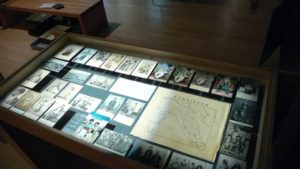 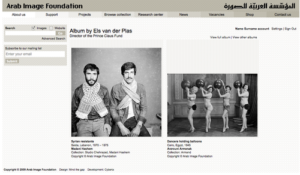 or Akram Zaatari and his partners in the “Arab Image Foundation,” who created a visual-political corpus undermining the borders of the nation, assuming/claiming to impose artificial divisions upon shared visual spaces; or Walid Raad and The Atlas Group, who introduced the “if only” as a living material into the organization of the archive they created; or the Unknown Photographer archive created by Michal Heiman to re-presence the figure of the photographer in environments where photographs hover in journalistic space as if they created themselves; 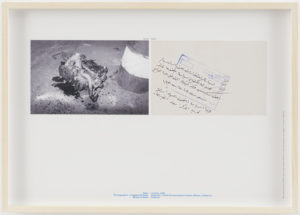 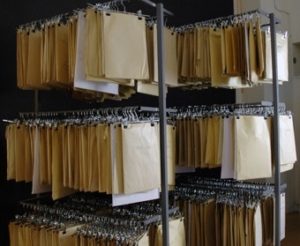 or the effort to re-define the borders of a realm of knowledge such as architecture not from the point of view of its sovereign agents who guard the borders of its objects, but rather from a space of relationship that these objects create and operate, the way Zvi Elahyani does it in the Israel Architecture Archive; 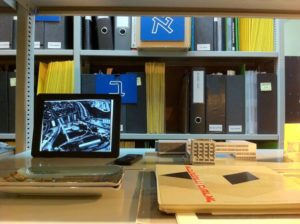 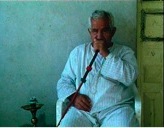 or the creation of a shared film archive—Israeli/Palestinian, for example, which reconstructs the fact that Israelis and Palestinians are inseparable “Siamese twins,” the way Eyal Sivan established; or an archive of constituent violence, the violence that constituted the Israeli regime in the late 1940s, as I wished to do, a civil archive of photographs that suspends the rule of the existing archives—the Zionist and the Nakbah—and reconstructs the photographs as shared documents of potential history.
However, archive fever is not reducible to the claim to study documents. Archive fever is the claim to revolutionize the archive, to a different understanding of the documents it holds, of its supposed purpose, of the right to see them and act accordingly, the claim to the forms and ways of categorizing them, presenting and using them. It challenges the norm that has become the definition of an archival document as designed by sovereign power—documents the writing of which the powers that be dictate, and later also order their hiding. They are the ones who determine when the public will be permitted to study them. Archive fever reveals the binding feature of archive documents in the reverse sense than the way in which they serve the powers that be—they are not the property of these powers and should be protected from them. They must not be rewritten or changed and should be available/accessible to whoever might express interest in them and serve in any future claim as to the power exerted through and by them. As the archived documents touch upon shared life, they contain information about this life, decrees and rulings responsible for their design, claims to challenge it, documentation of its repression, proposals for change and many others ensuring its continuance. Archive fever, responsible for creating other archive models, exposes the fact that the distancing by law of citizens from documents regarding their lives for decades at a time is a violation of the basic right to share the archive, a right embodied in the archive as such, by the mere fact that the documents it holds regard those who wish to actualize this right. Thus, instead of regarding the archive as an institution that preserves the past as though its contents do not directly impact us, I propose to see the archive as a shared place, define it as shared place that enables one to maintain the past incomplete, or to preserve what Benjamin refer to as the “incompleteness of the past”.5 Surprisingly (or not) sovereign regimes treat photographs in different manners. They do not usually include them in the archiving regime that confiscates documents for lengthy periods of time, among other reasons because photographs are not perceived as documents. No wonder, then, that the accessibility of photographs and their public distribution has enabled the creation of non-state photography archives much longer before the possibility of creating an alternative archive became widespread, a fever.
In order to understand how an archive enables photographs to be hidden and revealed, I shall present two competing approaches of photography, and argue that the new photography archives have flourished in the tension that exists between them. The first approach, which I call instrumental and productive, identifies photography with its product—a photograph, and with the “photographed event” as though the photograph were safe and undisturbed. The instrumental approach to photography, then, regards photography as a technology producing photographs of X, and these are the finished products of a single subject—a technician, operator, or photographer. Such approach is widespread in the existing archives where photographs are sorted according to what they show according to those who preserve them, and as we approach them we search for them through readymade categories to which the seen is referred. “This is X.” This is our common practice for viewing photographs—pointing out the seen and stating “This is X.” Apparently we perform the same gesture by saying “This is Aunt Haya,” or “This is a refugee.” or “This is a wanted man,” as if these three were simply proper names. When we say “This is X,” we are actually applying a name, category, or concept to the photograph. In order to do so we first strip the photograph from the plurality inscribed in it and reduce it to the “This” that is there in the photograph, or as, in Roland Barthes’ famous words, “This was there.” Thus, when we say “This is X,” we are actually saying “X was there.” In this fusion of two procedures—stripping on the way hand, and pointing out on the other—I propose to see the zero-degree of an iconization procedure existing independently of the fact whether a certain image is that which is called “iconic.” Iconization turns the photograph into the photograph of X and makes us assume that not just “this” was there but rather “X.” Nevertheless, iconization accompanies our viewing of photographs and enables us to find our way in them. Because of the fact that we can usually not manage without it, we must treat it with the utmost caution, and remember that the photograph does not document a concept or typical event but is, rather, a product of an event shared by several participants. The procedure of iconization makes us forget the fact that a photograph is a document produced in an encounter, in what I call “the photography event.”7 This takes place with the mediation of the camera, and is repeated, directly following the first event or apart from it, mediated by the photograph. The second event takes place in the encounter with the viewer who, as emerging from the archive fever, enables us to question turning the archive photographs into dead pages, stable references of concepts or categories that served to file them and subsequently stuck to them like a second skin. The filing of a document in an archive is no simple task and the chances of the photographed image to get lost regardless of sentries who serve other, greater masters.8 The sentries at Zionist archives, for instance, avoid search categories such as “wanted person,” “refugee,” or “expulsion,” even though the regime they serve is the one responsible for creating these categories and attaching them to living human beings. Still, that which is called “advanced search” usually enables us to reach such photographs, held in the archive, and since the archive cherishes them even if for other reasons. But this kind of outsmarting the system, enabling us to cross roads with “refugees” or “wanted persons” does not usually prevent the blurring of the photography event and the rigidifying of concepts and categories that turn the photographed into embodiments of those entities that the State creates and whose strings it wishes to pull like mere marionettes obeying a single director whose bidding is done by an army of puppeteers. Photographs as icons are the outcome of sovereign regimes that created sovereign archives. The archives are based on an instrumental regard of photographs as if these were the signifiers of typical events or situations—“the photographed event”—which they document from the outside. Storing photographs in an archive and distancing the public from them as though annulling the photography event—this is the way in which a sovereign regime treats the common domain, whether space, photography, or archive. The protocol of iconization is responsible for the illusion that anyone has the power of total mastery over that which would be inscribed in a photograph, as though a photograph expresses a world picture, as though the camera sees eye-to-eye with the person holding it, with whoever sent him or filed the photograph in the archive. In every encounter with a photograph in an archive, an iconization protocol is enacted. It is that which enables one to file the photograph, and extract it. Sometimes the photographs yield easily to names or concepts attached to them, at others they remain a dim image that does not coagulate into a typical object, and the pointing-out gesture stating “This is X” needs much strength in order to be linked to the photograph. The photograph, any photograph, is produced within the framework of a shared world. Therefore, the claim “This is X” can play a practical role of identification one by his or her name, but can also constitute and deconstruct communities, rule fates, contest certainties, sabotage, destroy, rescue, and challenge.
In a conflictive reality, such circular repetition occurring for several decades—as in the Israeli context—must arouse suspicion. My suspicion was aroused as I began to construct a photographed archive focusing on the time in which the photograph was produced, related not to the outcome of the war—the Zionist narrative of victory versus the Palestinian narrative of catastrophe, the Nakbah—but rather actually posing the question whether this was war and whether there were two sides here. A prolonged look at the photograph enables one to notice that besides the formal repetition of a victory icon, the photograph holds no signs of battle or war. If we exit the frame and reconstruct what happened at Um Rashrash, and then return to the photograph equipped with that information, we shall discover that no only the pretense of producing an icon is responsible for the void inside the picture. Um Rashrash was not manned by an enemy. But exiting the limits of the frame not only to Um Rashrash but also to an archive of the period, and viewing photographs not through the concepts which the archive attaches to them (“The battle of Latroun,” “Operation Yoav,” “Lifting the siege on Jerusalem” or “Cleansing terrorist nests”) we gradually discover that most of the violent events did not tip the scales in battles between two sides but rather cleansed the body politic of the governed and constituted the law that institutionalized the graphic, economic, social, urban, and political reality that this cleansing had produced.10 The results of violence did not turn into the law at the moment that the photograph of the ‘ink flag’ was taken setting it as “The end of the war” but rather at a different time, the moment when the State of Israel was declared, the moment in which constituting violence became the law. While the claim “This is X” (like “This is victory”) makes superfluous the renewed look at the photograph, and the seen in this photograph or its neighbors in the archive appears again and again as a repetition of that very same “This is X,” as long as none of the gaps, mistakes, injustices, lusts, lies, and information revealed with time do not negate the circular relation between image, concept and reference, do not undo their fusion—as citizens we must realize that as we enter the archive, a red warning light flashes: we face a non-civil archive, in which the photographs have turned from shared documents into icons, and these serve the archive’s sovereign. The icon, as I have shown, is an effect of the usage and mode of reading, a protocol, and not an essential characteristic of a particular photograph.
Here again is one documented instruction for the public exposure of which Anat Kam is serving a prison sentence. Here is an open photograph taken by Miki Kratzman, published in Haaretz daily newspaper more than once, enlarged to giant dimensions and displayed at the Israel Museum, presented unhampered again and again in public space since. It is the photograph of a “Wanted man”. Not a photograph of a citizen sought by an emergency regime, but rather a photograph of a “wanted man”, fated – as we have learned from the documents collected by Anat Kam, but having known this earlier as well – to die. Our chances to see in Zakariya Zbeide’s portrait anything other than a “wanted man” are rather limited. After all, Zbeide’s existence in our shared space has been constructed as “wanted man”, so this concept has attached itself to him like a proper name, fused with his portrait, with his image. In view of the photograph we are expected to say “This is a wanted man”. In order to contest this portrait’s being that of a wanted man we have to place a protocol countering that of iconization—an iconoclastic protocol. Archive fever instructs us that not the destruction of photographs is at hand here, but rather the destruction of icons, of photographs as icons. This destruction cannot take place without undoing the point of view of preservers of constituting violence, a view that sees concepts where photographs are displayed, and the destruction of the archive as an institution for preserving the past. The archive preserves items of our shared world, it preserves that which enables us to shape it differently, anew, in common. Under conditions of what I have called elsewhere “regime-made disaster,” when the regime produces an ongoing disaster and administers the archive of disaster, an iconoclastic protocol is not merely a protocol of reading individual photographs. An iconoclastic protocol requires the claim to naturalize existing archives, and at the same time, or in the meantime, create alternative archives, and a willful exposure to archive fever. Instead of continuing to sort photographs by concepts, or photographers, in both archives which I created (Act of State 1967-2007 and Constituting Violence 47-50) I collected existing photographs, such that dwelled safely in other archives, and removed the partitions existing between photographs and photographed, photographed and spectators, and between periods of time, that which has passed and that which is at our door. The inevitable separation between “two sides” cracked open nearly by itself. The photographs appeared as complex events and the disaster inscribed in them no longer appeared as the disaster of only one side, but rather as disaster, and its victims were not voices of a completed past. They are living figures, partners, intervening in the present, turning to the viewer and together with her/him creating the conditions under which the photographed documents reappear as samples from a shared world whose formation they demand to shape, not under the constituent violence inscribed in it but rather together, so that no one agrees to take part in dividing the world and constituting humans in the mold of political concepts such as “refugees,” “wanted,” “collaborators,” or “illegal immigrants,” and forcing the spectator to recognize them because that is how the archive has presented them, as “refugees,” “wanted,” or “collaborators”. Here is a photograph that resembles many recent events of public occupation. We see people on the move, people occupying a space. We may ascribe to them a claim to have a right to enter or occupy that space; a claim to the right to (share the) archive in which their history is preserved; the right to this land where, a few decades ago, their presence was far from contested. 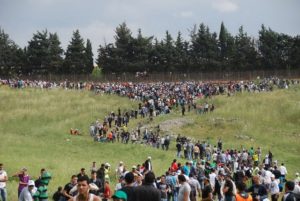 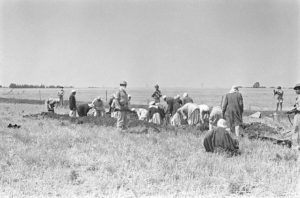 If we look at these people again in the next photograph, this time from the point of view of the sentries who are awaiting them, the sense of their presence changes immediately. Now they are likely to be classified as “infiltrators,” breaching the law of a sovereign state, or even as terrorists. The photograph, taken in the northern border of Israel, on May 15, 2011, the Nakba day, shows Palestinian refugees and their descendants trying to return to their homes. Let me recall very briefly several historical images: the women’s march on Versailles, the Afro-American march on Selma, blacks marching on Cape Town. In these images, part of the governed population—whose part in the body politic was not recognized—is moving toward what at the time emblematized the power that oppressed them and ignored their claim. These people are moving towards a place to occupy it. The major happening in these different events is the public claim of part of the governed people, made by their very presence, to their right to share the territory and its rule. Implied in this claim is another claim: that of being part of a body politic from which they have been excluded. For decades, their march and claims were seen from the perspective of the sentries, who excluded them and kept them outside the body politic, whose members possess a right to make claim. In order to see the photographed Palestinians not as “refugees,” and hence as people who are not part of the body politic, in order to see them rather as non-governed citizens, and to recognize their presence at the Israeli border as another instance of the “occupy” movement, it was not enough to criticize the Israeli ideology that regards every Palestinian as a suspect. What was required was a conceptual shift, an archive fever whose dynamic generated a shift in the concept of the archive itself. Ariella Azoulay is currently Assistant Professor of Comparative Literature and Modern Culture and Media at Brown University. Published on July 21, 2017 1. Ignaz Cassar, “Photoworks,” Philosophy of Photography, Vol. 1, No 2 (2010), p. 202.↩ 2. Jacques Derrida, Archive Fever (The University of Chicago Press, 1995), p. 36.↩ 3. During her military service, Anat Kam collected digital documents containing explicit discussion of liquidating Palestinians. Two years after finishing her military service she deposited the CD containing these documents at the hands of one of Ha’aretz journalist. He published his article without prudently disguising his sources and consequently Anat Kam became an immediate suspect and was arrested.↩ 4. Jean and John Comaroff, Ethnography and the Historical Imagination (Boulder, Colo.: Westview Press, 1992).↩ 5. “The past,” Benjamin wrote, “carries with it a secret index by which it is referred to redemption” (Walter Benjamin, “Theses on the Philosophy of History,” in vol. 2 of Selected Writings: 1938-1940, (Cambridge: Belknap Press of Harvard University Press, 2003), p. 390.↩ 6. See Georges Didi-Huberman, May 2011, “Sampling Chaos”, Etudes photographiques, No 27, p. 49.↩ 7. See my discussion of the two photography events in Ariella Azoulay, A Civil Imagination: A Political Ontology of Photography (New York: Verso, 2012).↩ 8. New technologies of tracing the form of the image, if and when applied to the photographs stored in existing archives, will enable the continued development of visual research from within an existing image. At the moment, however, they too are limited in their possibility to assume such research. See Tsila Hassinne’s “image tracer” http://missdata.org/israel%20tracer/index.html.↩ 9. For more on these two photographs see Ariella Azoulay, “Declaring the State of Israel: Declaring a State of War,” Critical Inquiry, vol. 37, no. 2 (2011).↩ 10. See Ilan Pappe’s use of the term “ethnic cleansing” not as population massacre but rather as cleansing a region of a certain population (Ilan Pappe, Ethnic Cleansing [Oxford: Oneworld, 2006]).↩ |


